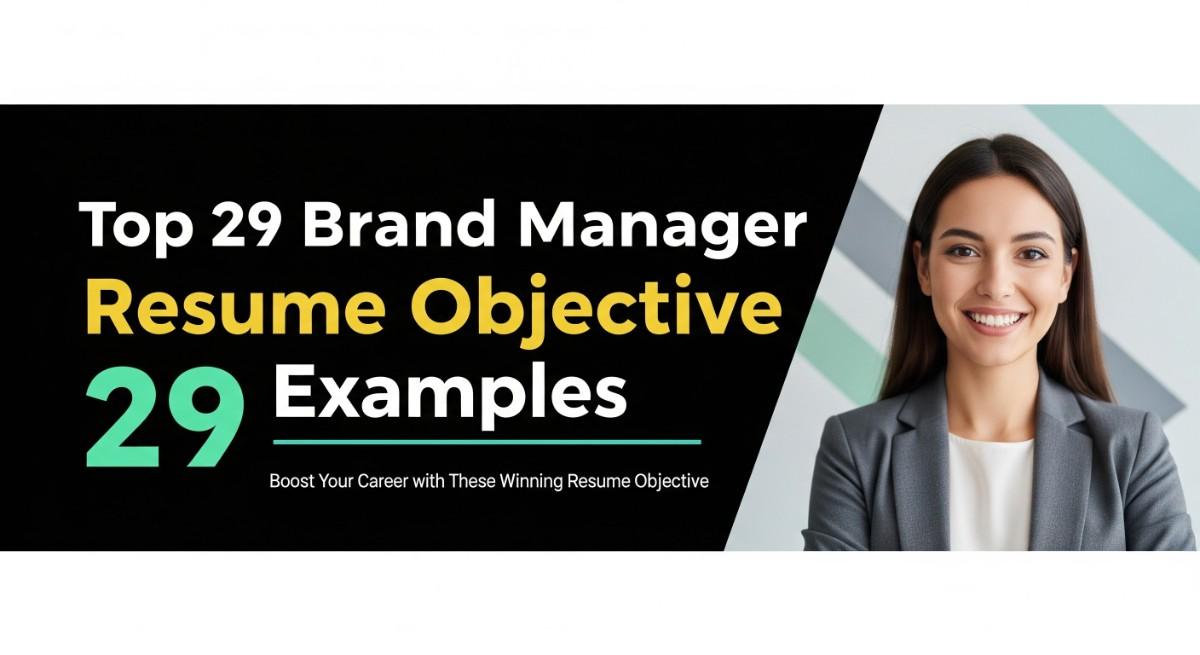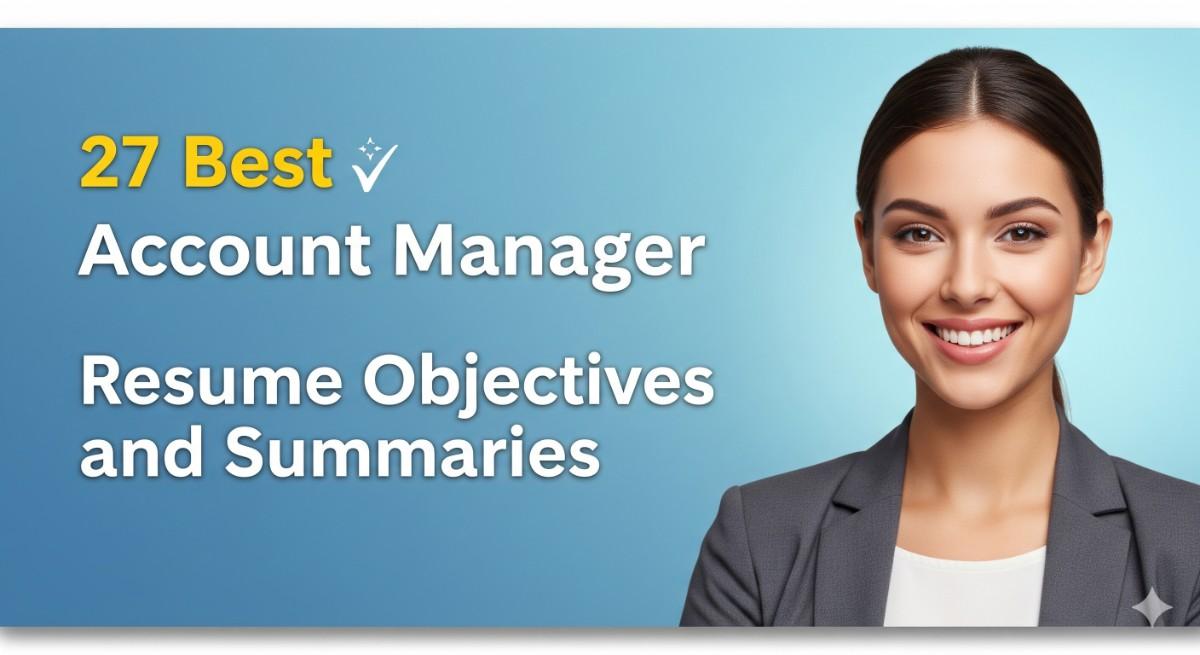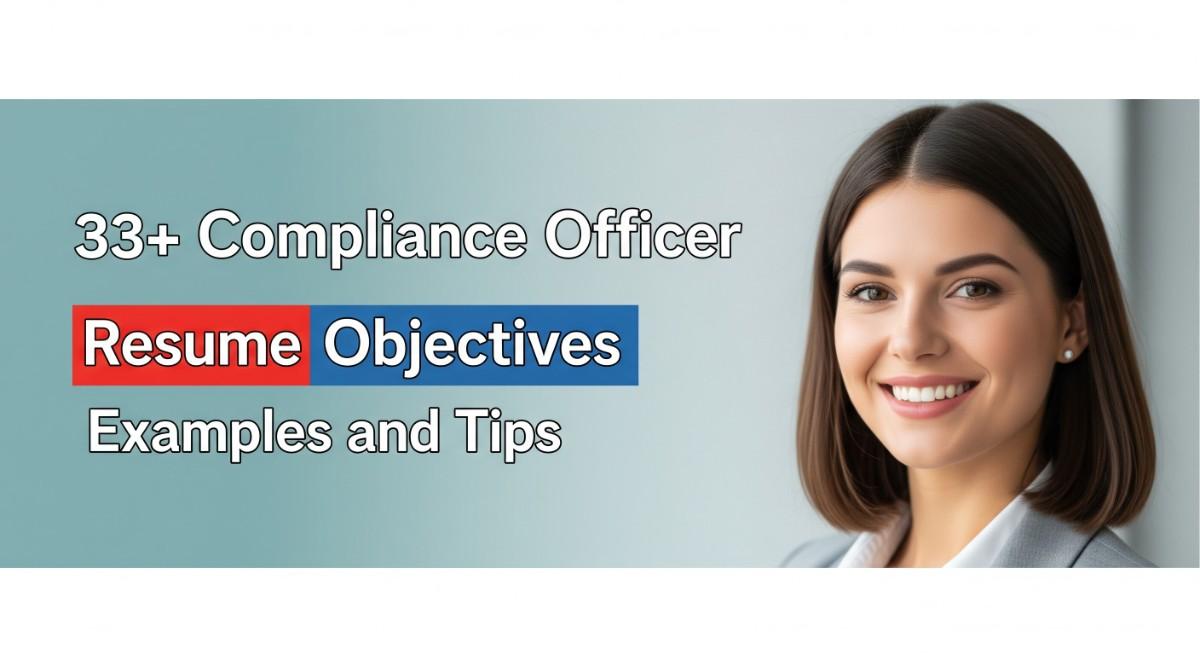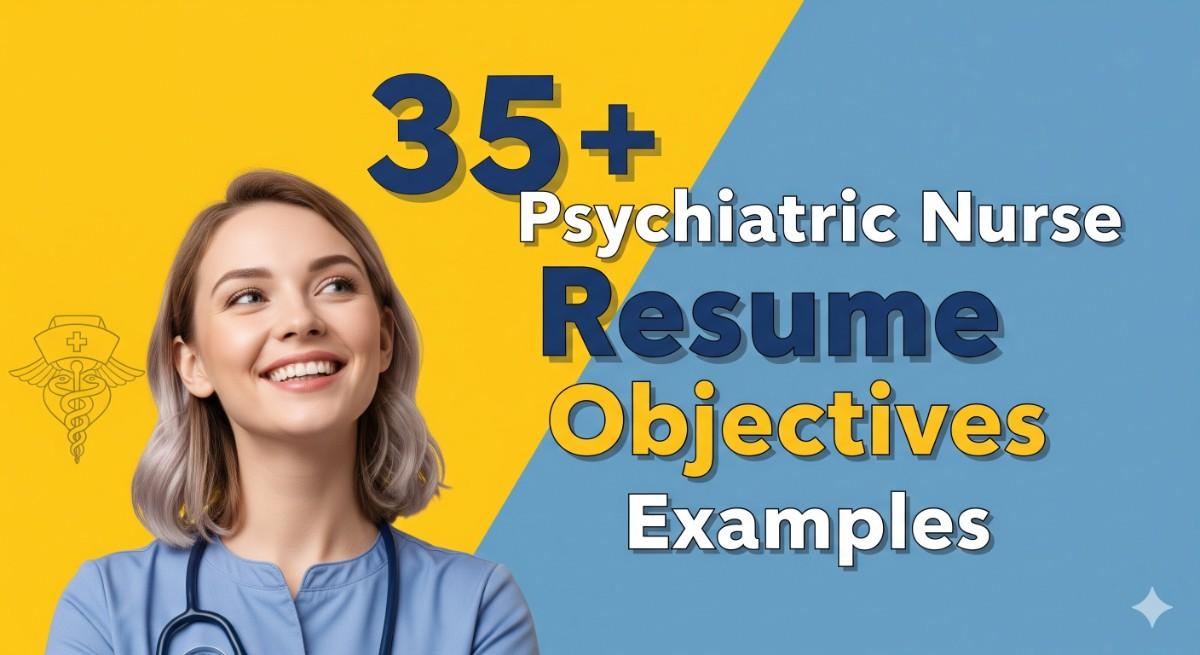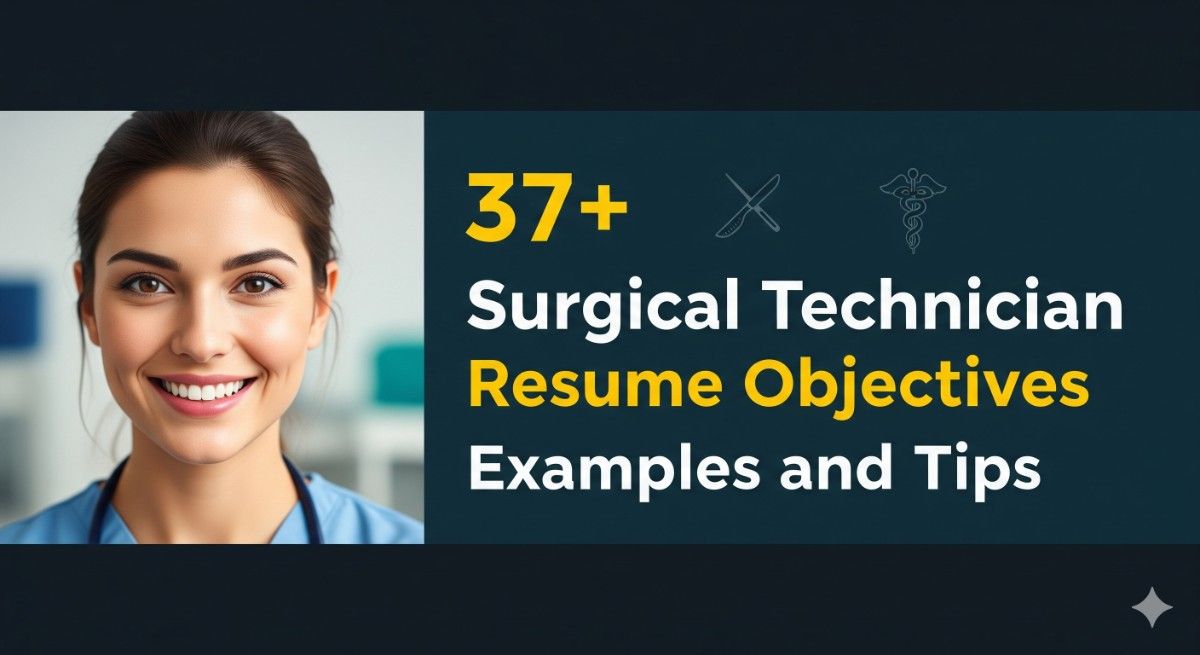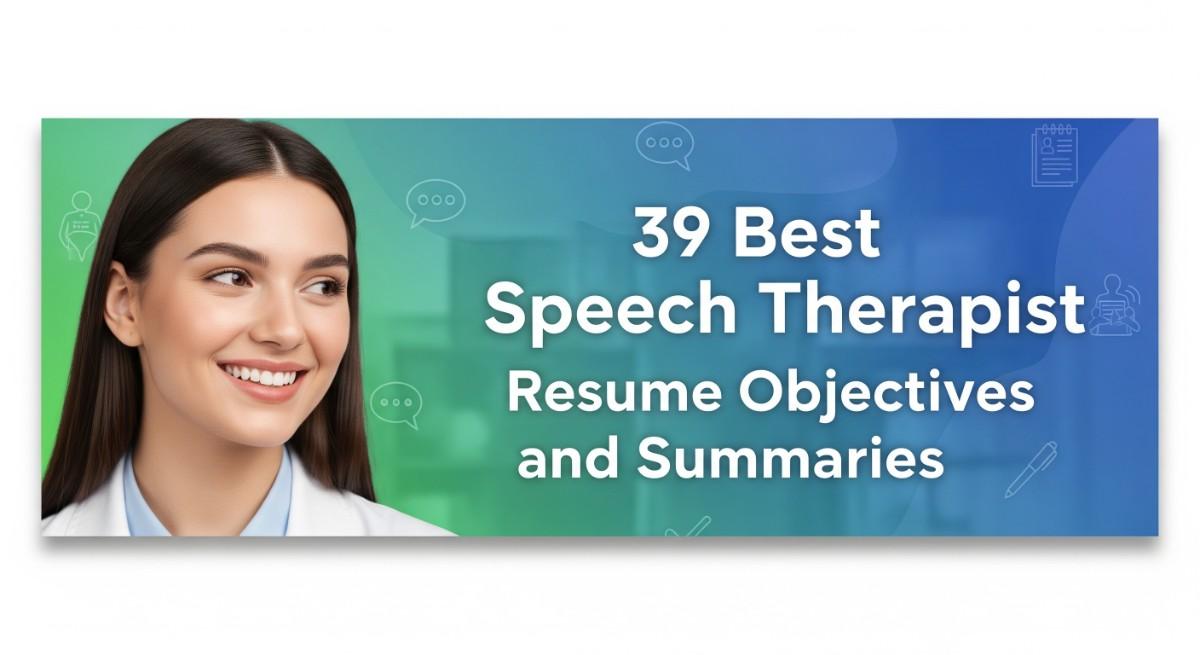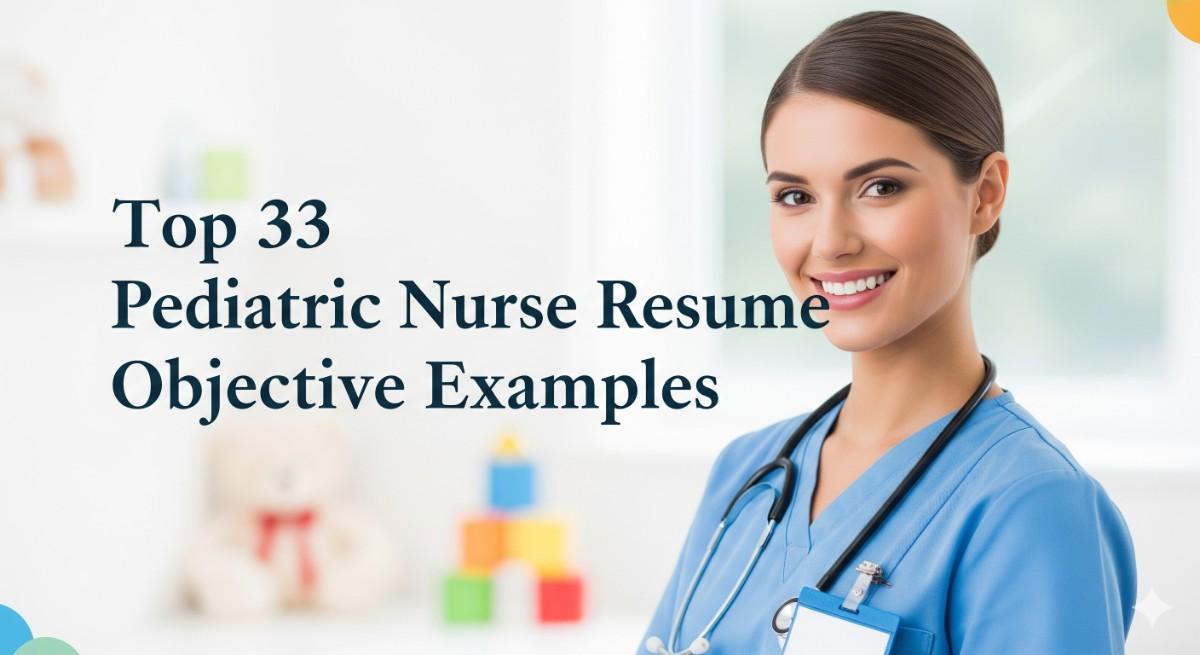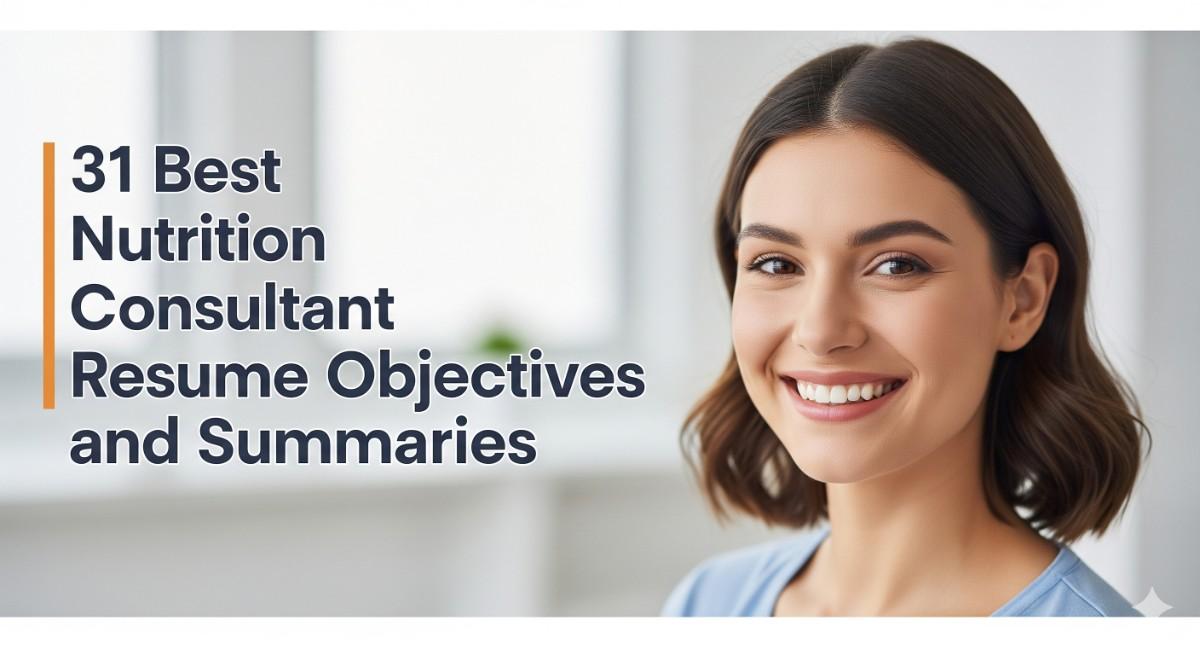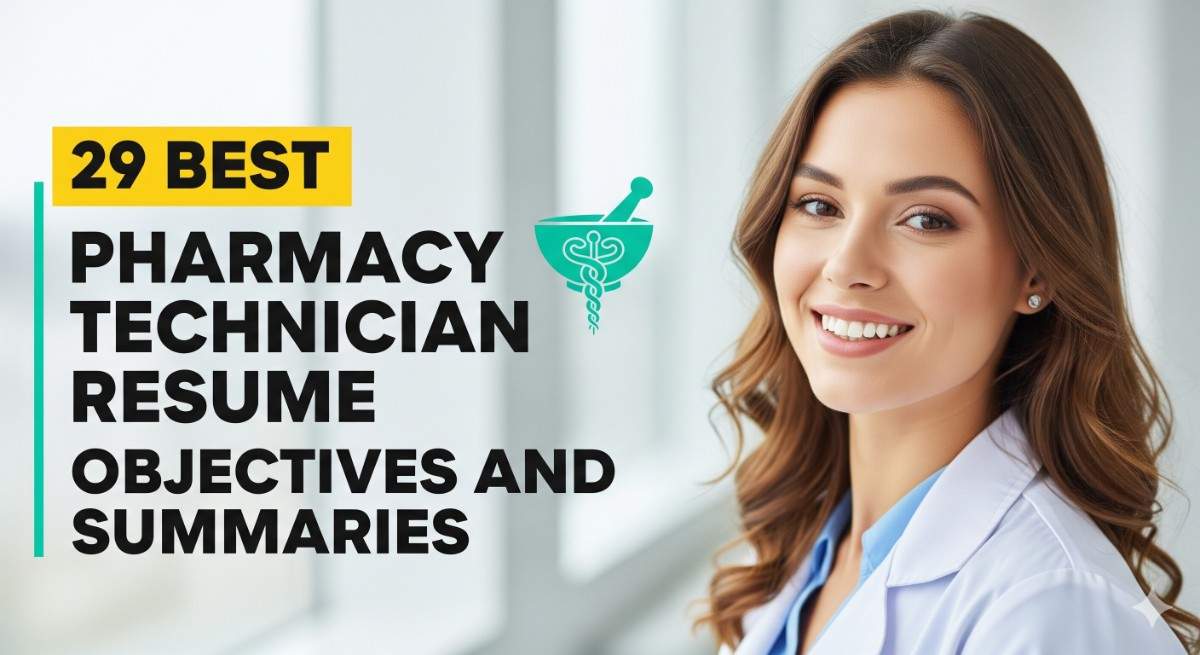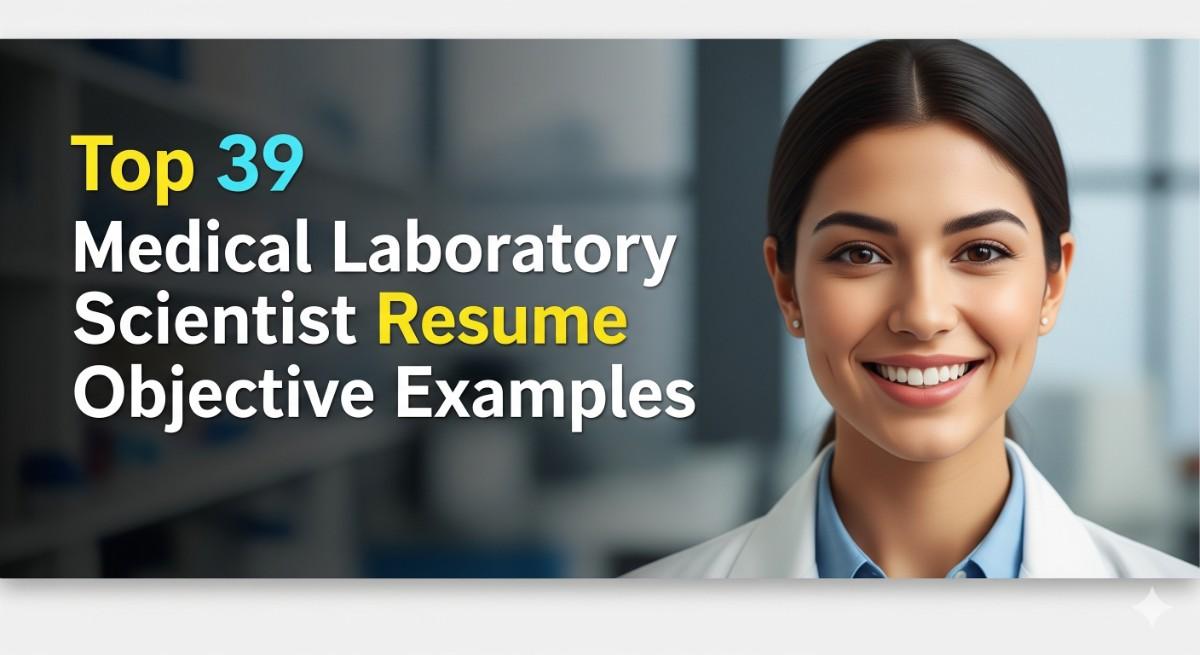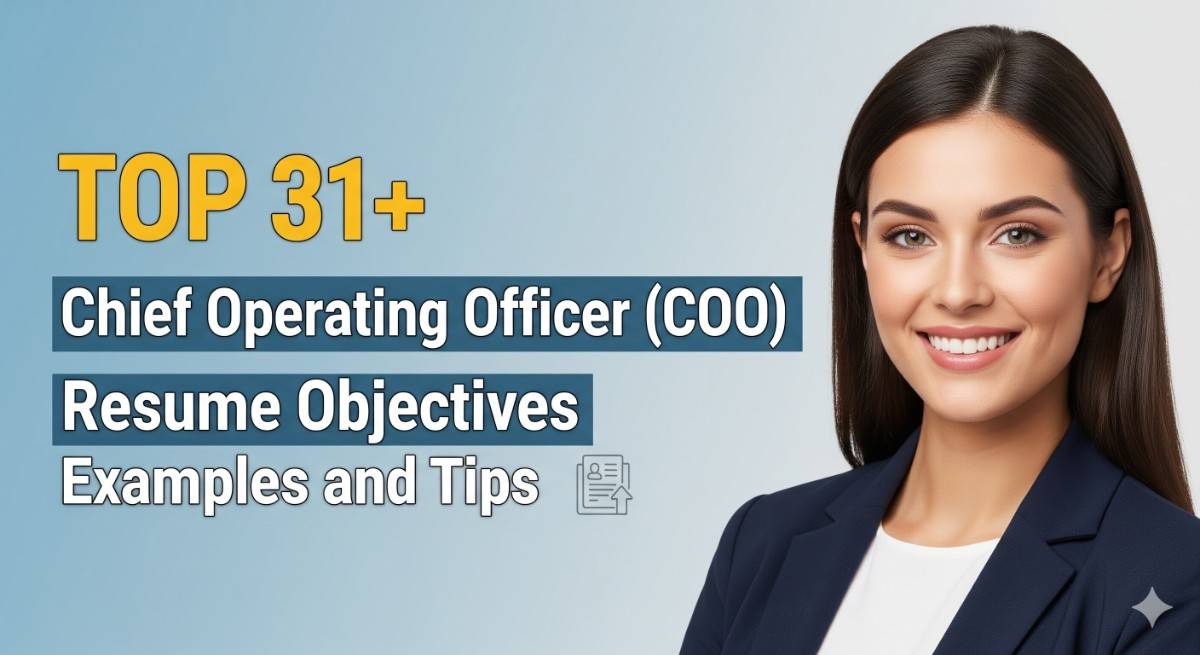
31+ Chief Operating Officer (COO) Resume Objectives Examples and Tips for 2025
In the competitive landscape of Chief Operating Officer (COO) positions, a compelling resume objective or summary serves as a powerful introduction that captures the attention of hiring managers. These opening statements are crucial for conveying a candidate’s leadership vision, operational expertise, and strategic acumen. A well-crafted objective or summary not only highlights the candidate’s unique qualifications but also demonstrates their ability to drive organizational success and enhance operational efficiency. In today’s job market, where executives are expected to navigate complex challenges, showcasing measurable achievements and industry-specific skills in these statements can significantly differentiate candidates. Ultimately, a strong opening sets the tone for the entire resume, inviting hiring managers to delve deeper into the candidate’s professional narrative.
Explore professional resume examples to understand what makes an effective opening statement.
Chief Operating Officer (COO) Resume Objectives
Choose from these Chief Operating Officer (COO) resume objectives and customize them for your specific situation:
Dynamic operations leader with a keen ability to streamline processes and enhance productivity, seeking a Chief Operating Officer position in a fast-growing tech startup. Eager to leverage my innovative problem-solving skills and previous project management experience to drive organizational efficiency and contribute to strategic growth initiatives.
Results-oriented professional with over 10 years of experience in operational management and team leadership, looking to advance to a Chief Operating Officer role. Proven track record of implementing process improvements that have increased profitability by 30% in previous organizations, and I am excited to bring this expertise to a visionary company aiming for transformative growth.
Accomplished executive with a strong background in supply chain management and logistics, seeking a Chief Operating Officer position in a manufacturing firm. Committed to optimizing operations and reducing costs, I aim to leverage my experience of achieving a 25% reduction in operational expenses through strategic vendor negotiations and process automation.
Detail-oriented and analytical business professional transitioning from an operational management role into a Chief Operating Officer position. Passionate about utilizing my extensive background in data analysis and performance metrics to develop data-driven strategies that enhance operational efficiency and drive company success.
Energetic and ambitious recent MBA graduate with a focus on operations management, seeking to begin a career as a Chief Operating Officer in the renewable energy sector. Eager to apply my academic knowledge and internship experience in process optimization and strategic planning to support sustainable growth and innovation within the organization.
Seasoned operations executive with over 15 years of comprehensive experience in the healthcare sector, seeking a Chief Operating Officer role to leverage my expertise in regulatory compliance and operational excellence. Proven ability to lead cross-functional teams and implement patient-centered initiatives that improve care delivery and reduce operational costs.
Strategic thinker and results-driven leader with a decade of experience in business operations, aiming for a Chief Operating Officer role in a retail organization. Excited to utilize my skills in supply chain management and customer service enhancement to drive sales growth and deliver exceptional customer experiences.
Accomplished senior manager with a unique blend of technical and operational expertise, seeking to transition into a Chief Operating Officer role. Dedicated to fostering innovation and efficiency, I have successfully led initiatives that resulted in a 40% improvement in workflow efficiency and am eager to contribute to a forward-thinking organization.
Ambitious professional with a solid foundation in project management and process optimization, looking to advance to Chief Operating Officer within a startup environment. Ready to apply my entrepreneurial spirit and meticulous attention to detail to drive operational growth and help the organization scale effectively.
Dedicated operations professional returning to the workforce after a career break, eager to secure a Chief Operating Officer position in a nonprofit organization. Committed to harnessing my previous experience in program management and stakeholder engagement to enhance operational frameworks and drive mission-focused outcomes.
Build your resume in just 5 minutes with AI.

Experienced operations director with a successful history in team leadership and organizational transformation, seeking a Chief Operating Officer role in the technology sector. Passionate about driving innovation and efficiency, I have led teams that achieved a 50% increase in project delivery speed and am eager to replicate this success.
Visionary operational strategist with a background in financial services, looking to transition into a Chief Operating Officer role to apply my expertise in risk management and operational scalability. My goal is to streamline procedures and strengthen internal controls, ensuring sustainable growth and organizational resilience in a competitive market.
Results-driven professional with extensive experience in process improvement and team leadership, seeking a Chief Operating Officer position in the hospitality industry. Proven ability to enhance guest satisfaction and operational efficiency, demonstrated through the successful implementation of systems that reduced guest wait times by 20%.
Proficient operations manager with a strong focus on technology integration and efficiency improvement, aiming to step into a Chief Operating Officer role within a digital marketing agency. Excited to leverage my background in performance metrics and project management to drive operational excellence and support business growth.
Dedicated and adaptable business leader committed to driving organizational success, seeking a Chief Operating Officer position. With a career marked by implementing transformative operational strategies that have reduced costs and improved service delivery, I am excited to contribute my skills to a mission-driven organization ready for growth.
Innovative and strategic operations executive with a passion for building high-performing teams, looking for a Chief Operating Officer role in the e-commerce sector. Eager to bring a proven track record of enhancing operational processes and cultivating a culture of excellence that supports both employee satisfaction and customer loyalty.
Chief Operating Officer (COO) Resume Summaries
Select from these professional Chief Operating Officer (COO) resume summaries and adapt them to highlight your unique qualifications:
Dynamic Chief Operating Officer with over 15 years of experience in the tech industry, driving operational excellence and innovation. Proven track record of increasing operational efficiency by 30% through strategic process improvements and the implementation of advanced technologies. Adept at leading cross-functional teams and fostering a culture of collaboration, accountability, and growth. Passionate about leveraging data analytics to inform decision-making and enhance performance metrics.
Results-oriented Chief Operating Officer with a decade of experience in the healthcare sector, specializing in streamlining operations and improving patient care delivery. Successfully reduced operational costs by 20% while increasing patient satisfaction scores by 35%, through the development of new service protocols and team training initiatives. A strong leader with a commitment to compliance and quality assurance, dedicated to implementing best practices across all levels of the organization.
Accomplished Chief Operating Officer with 12 years of experience in the retail industry, known for transforming underperforming operations into highly efficient teams. Spearheaded the implementation of a new inventory management system that resulted in a 25% reduction in overhead costs and a 15% increase in stock turnover rates. Skilled in financial analysis, supply chain management, and market expansion strategies, with a focus on enhancing customer experiences and overall profitability.
Strategic Chief Operating Officer with over 18 years in the financial services sector, focusing on operational risk management and efficiency. Demonstrated expertise in leading successful mergers and acquisitions, contributing to a 50% increase in market share. Highly experienced in regulatory compliance and developing robust risk mitigation strategies, with a track record of enhancing operational frameworks that support sustainable business growth.
Innovative Chief Operating Officer with 10 years of experience in the manufacturing sector, dedicated to optimizing production processes and reducing waste. Successfully implemented Lean Six Sigma methodologies that improved operational efficiency by 40% and decreased production lead times by 25%. A collaborative leader who excels in team development and fostering a culture of continuous improvement.
Visionary Chief Operating Officer with over 15 years in the nonprofit sector, focusing on maximizing organizational impact and operational sustainability. Achieved a 60% increase in fundraising efficiency through the enhancement of operational processes and donor engagement initiatives. Proven ability to build strong partnerships and lead diverse teams to drive mission-focused results, with a commitment to transparency and accountability.
Proven Chief Operating Officer with 10 years of experience in the e-commerce industry, recognized for enhancing customer engagement and driving sales growth. Successfully led a digital transformation project that resulted in a 40% increase in online sales and improved website traffic by 50%. Expertise in data-driven decision-making, supply chain optimization, and customer service excellence, committed to fostering innovative solutions for business success.
Dedicated Chief Operating Officer with 15 years of experience in the logistics and supply chain sector, focused on enhancing operational efficiency and client satisfaction. Spearheaded initiatives that improved delivery times by 30% and reduced operational costs by 25%. A strong communicator and strategic thinker, skilled in negotiation and relationship-building with key stakeholders to drive business objectives forward.
Results-driven Chief Operating Officer with 11 years in the hospitality industry, known for enhancing guest experiences and operational standards. Successfully increased occupancy rates by 20% through targeted marketing strategies and operational improvements. Expertise in staff training and development, financial forecasting, and strategic planning, dedicated to creating an exceptional environment for both guests and employees.
Transformational Chief Operating Officer with over 20 years of experience in the telecommunications industry, specializing in scaling operations and driving innovation. Achieved a 50% reduction in service delivery time through the adoption of agile methodologies and process enhancement initiatives. Adept at leading large teams and aligning operational goals with corporate strategy to ensure sustained growth and competitive advantage.
Dynamic Chief Operating Officer with a strong background in the education sector, leveraging 18 years of experience to foster academic excellence and operational efficiency. Successfully implemented a new curriculum management system that increased student retention by 25% and improved overall satisfaction scores. Committed to building collaborative relationships with educators, stakeholders, and community members to drive positive change.
Experienced Chief Operating Officer with 14 years in the energy sector, specializing in operational strategy and sustainability initiatives. Developed and executed a comprehensive energy efficiency program that reduced operational costs by 35% while enhancing the company’s environmental impact. Skilled in regulatory compliance and stakeholder engagement, with a focus on fostering innovation in energy solutions.
Proficient Chief Operating Officer with 9 years in the agribusiness industry, dedicated to improving supply chain efficiency and product quality. Successfully led a project that cut production costs by 20% and improved yield rates by 15% through technological advancements and process optimization. A strong advocate for sustainable practices and community engagement, committed to driving growth while maintaining environmental stewardship.
Strategic Chief Operating Officer with 13 years of experience in the pharmaceutical industry, focusing on operational excellence and compliance. Successfully led initiatives that streamlined production processes, resulting in a 30% reduction in time-to-market for new products. Adept at navigating regulatory landscapes and fostering a culture of quality assurance, dedicated to advancing organizational goals and ensuring patient safety.
How to Write Compelling Chief Operating Officer (COO) Resume Objectives and Summaries
- Use industry-specific keywords from the job description to improve your resume’s visibility. Incorporate terms like “operational efficiency,” “strategic planning,” and “performance metrics” to align with COO responsibilities.
- Quantify your achievements to demonstrate your impact. Instead of stating you “improved processes,” specify that you “reduced operational costs by 20% in one year through process optimization and team restructuring.”
- Tailor each objective or summary to the specific COO position you’re applying for. Highlight your relevant experience and the unique value you bring, addressing the company’s specific challenges and goals.
- Avoid vague language; be precise about your experience. Instead of saying you “managed teams,” clarify by stating you “led a cross-functional team of 50+ in a project that increased revenue by $5M.”
- Leverage resume examples from successful COOs or industry leaders. Analyze their phrasing and presentation to inspire your own objectives and summaries, ensuring your language reflects senior-level expertise.
- Consider using an AI resume builder to draft your objectives and summaries. These tools can help generate impactful phrases and structure while ensuring your content is aligned with current hiring trends.
- Common mistakes include using generic statements or clichés. Avoid phrases like “hardworking” or “team player.” Instead, illustrate your leadership with specific examples of how you transformed teams and drove results.
- Your cover letter should complement your resume objectives and summaries. Reference key achievements or challenges that align with the COO role to create a cohesive narrative about your qualifications and vision.

Build your resume in 5 minutes
Our resume builder is easy to use and will help you create a resume that is ATS-friendly and will stand out from the crowd.
Key Takeaways for Chief Operating Officer (COO) Resume Objectives and Summaries
- Clearly articulate your vision for operational excellence, emphasizing how you can drive strategic initiatives and enhance organizational effectiveness across diverse business functions.
- Highlight your experience in managing cross-functional teams, showcasing your leadership style and ability to foster collaboration to achieve company goals.
- Quantify your achievements with specific metrics, such as revenue growth or cost savings, to demonstrate your impact on previous organizations and your potential value to future employers.
- Tailor your objective or summary to reflect the specific industry and company culture, showing your understanding of their unique challenges and how you can address them.
- Incorporate key operational competencies, such as supply chain management, process optimization, and technology integration, to position yourself as a well-rounded candidate for the COO role. Consider using an AI resume builder for optimization
Frequently Asked Questions
What is the ideal length for a COO resume objective or summary?
A COO resume objective or summary should be concise, ideally between 2 to 4 sentences or around 40 to 80 words. This length allows you to provide a snapshot of your career goals and highlight key achievements without overwhelming the reader. Focus on impactful language that conveys your leadership experience. If using an AI resume builder, ensure it captures your unique qualities efficiently.
How should I customize my COO resume objective or summary?
Customization is crucial for standing out as a COO candidate. Tailor your objective or summary to reflect the specific company you’re applying to by incorporating relevant keywords from the job description. Highlight your experience that aligns with their goals. Consider using cover letter templates as a guide to maintain a consistent tone and messaging across your application.
What keywords should I include in my COO resume objective or summary?
Incorporating industry-specific keywords is essential for passing through Applicant Tracking Systems. Include terms like “operational excellence,” “strategic planning,” “change management,” and “cross-functional leadership.” Also, mention your achievements quantitatively, such as “increased operational efficiency by 25%.” This not only enhances visibility but also showcases your expertise, making your resume more compelling. Use resume synonyms to enhance your word variety.
How can I ensure the effectiveness of my COO resume objective or summary?
To ensure effectiveness, focus on articulating your unique value proposition clearly. Use strong action verbs and specific achievements that demonstrate your leadership and operational impact. A well-crafted resume summary can serve as a powerful introduction, while an objective can convey your career aspirations. Experiment with an AI resume builder to generate ideas, but always refine the content to reflect your authentic voice.

